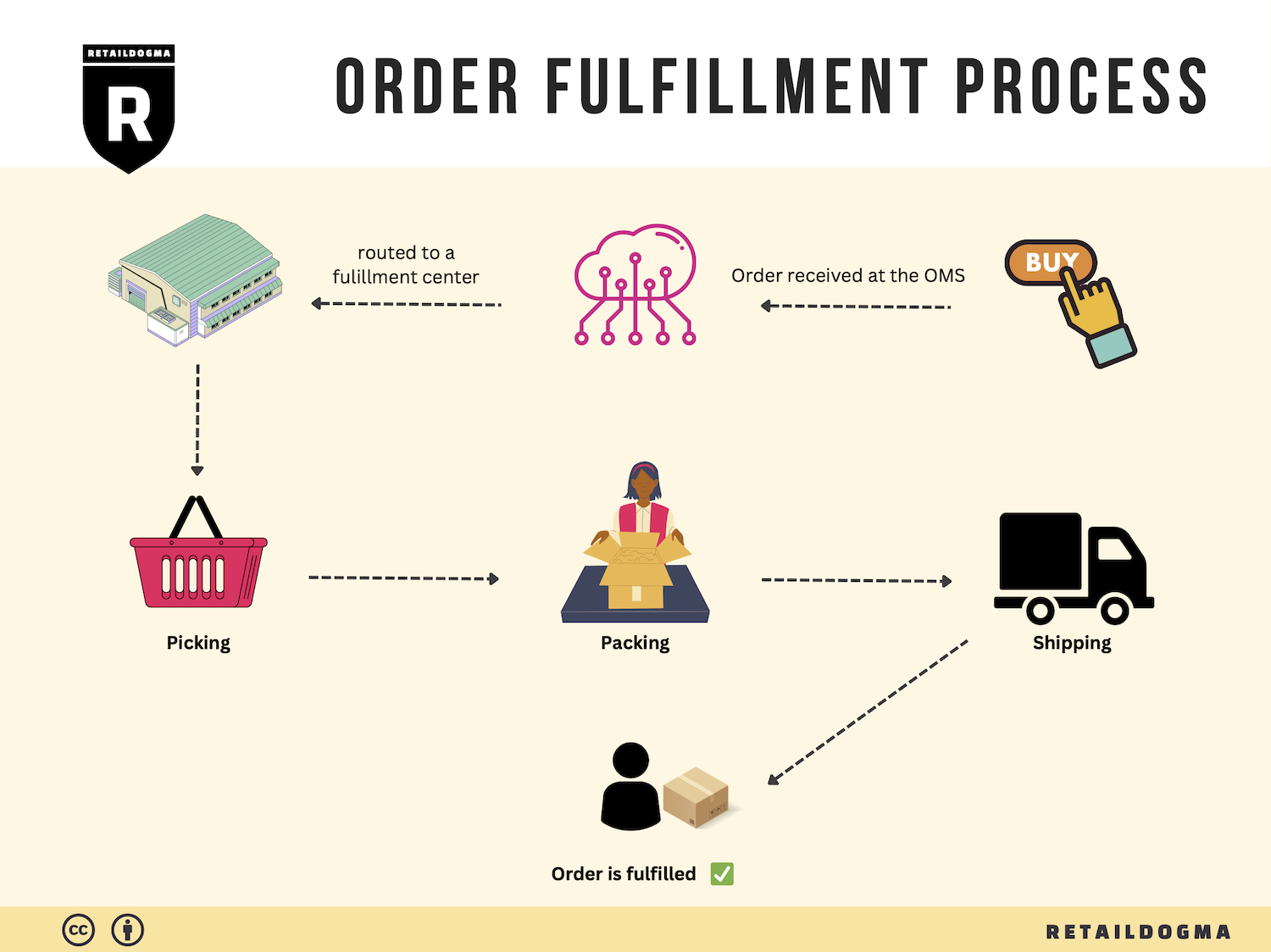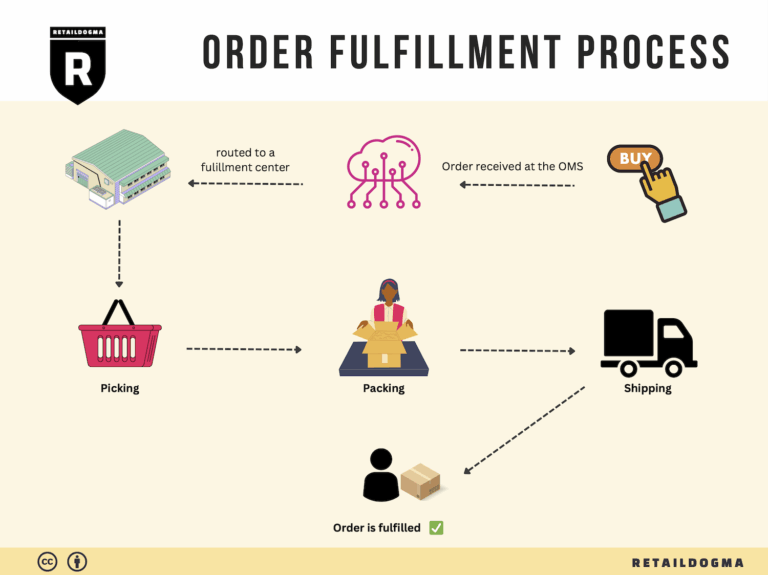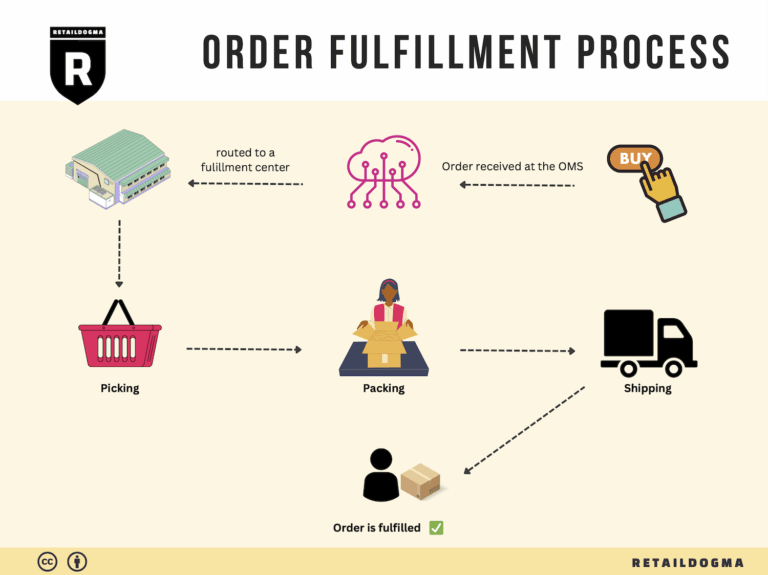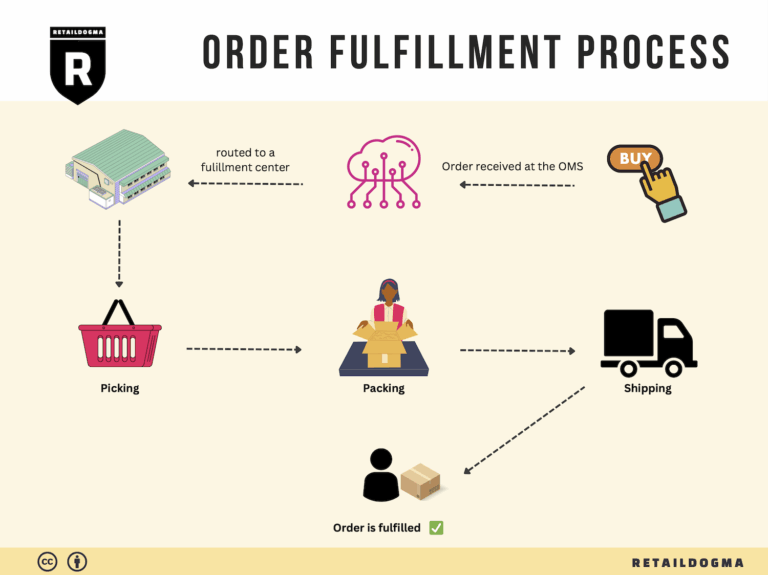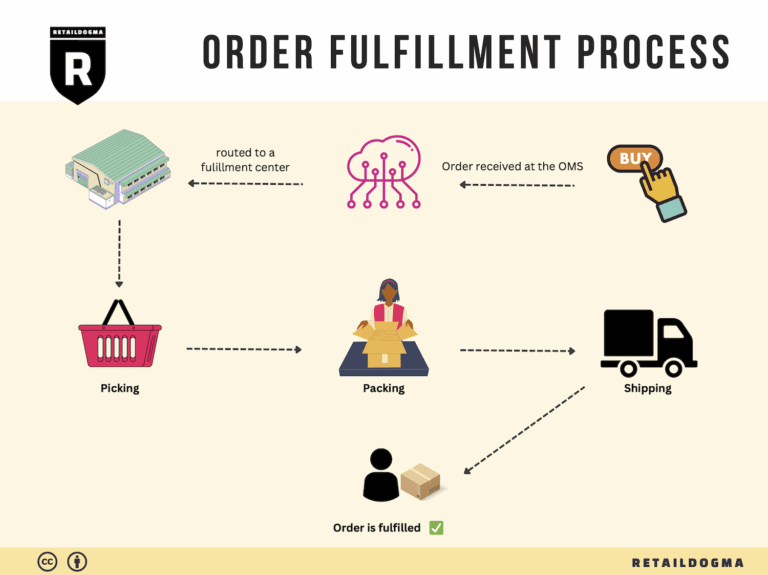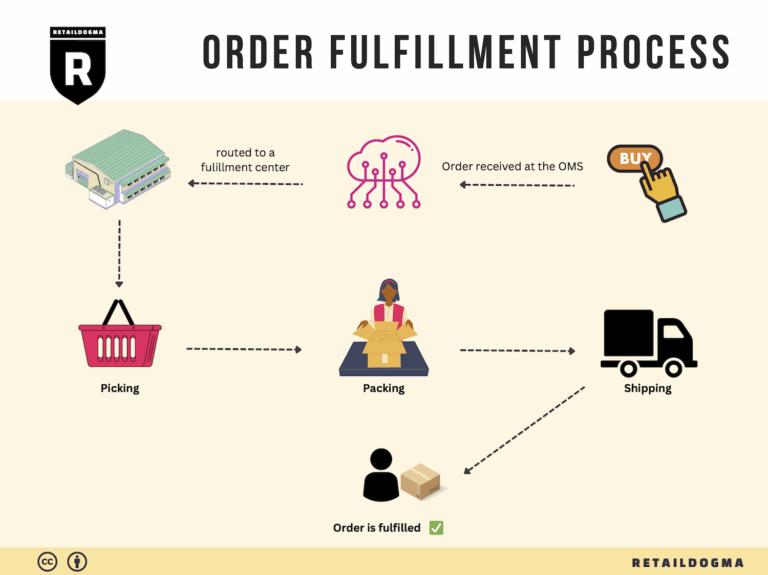What Is A Fulfillment Center? A Complete Guide (2025)
What is E-commerce Fulfillment? An Introduction for Growing Businesses
Understanding E-commerce Fulfillment: A Key to Business Success
As your online business begins to grow, you may find yourself facing a common pain point: the overwhelming task of packing and shipping orders. What starts as a manageable workload can quickly escalate into a logistical nightmare, consuming time and resources that could be better spent on scaling your business. This is where effective e-commerce fulfillment comes into play.
In simple terms, fulfillment is the process of getting a product from your inventory into the hands of your customers. It encompasses everything from receiving orders to packing, shipping, and managing returns. For many growing businesses, the challenge lies in efficiently managing this process while maintaining a high level of customer satisfaction.
In this guide, we will explore various fulfillment models that can help streamline your operations. You’ll learn about options like third-party logistics (3PL) providers, which can handle warehousing, packing, and shipping on your behalf, and Fulfillment by Amazon (FBA), which allows you to leverage Amazon’s extensive distribution network. Each model has its advantages and challenges, and understanding these can help you make informed decisions that align with your business goals.
We will also delve into the core services offered by fulfillment partners, such as inventory management, order processing, and returns management. These services are essential for keeping your operations running smoothly and ensuring that your customers receive their orders promptly and accurately.
Choosing the right fulfillment partner is critical to your success. We’ll cover key factors to consider, including scalability, technology integration, and cost. Understanding the pricing structure of fulfillment services—such as setup fees, storage fees, and shipping costs—will empower you to assess your options and choose a partner that fits your budget and operational needs.
Ultimately, this guide aims to empower e-commerce business owners like you to make smart, strategic decisions about your logistics. By optimizing your fulfillment process, you can enhance customer satisfaction, increase efficiency, and focus on what you do best: growing your business.
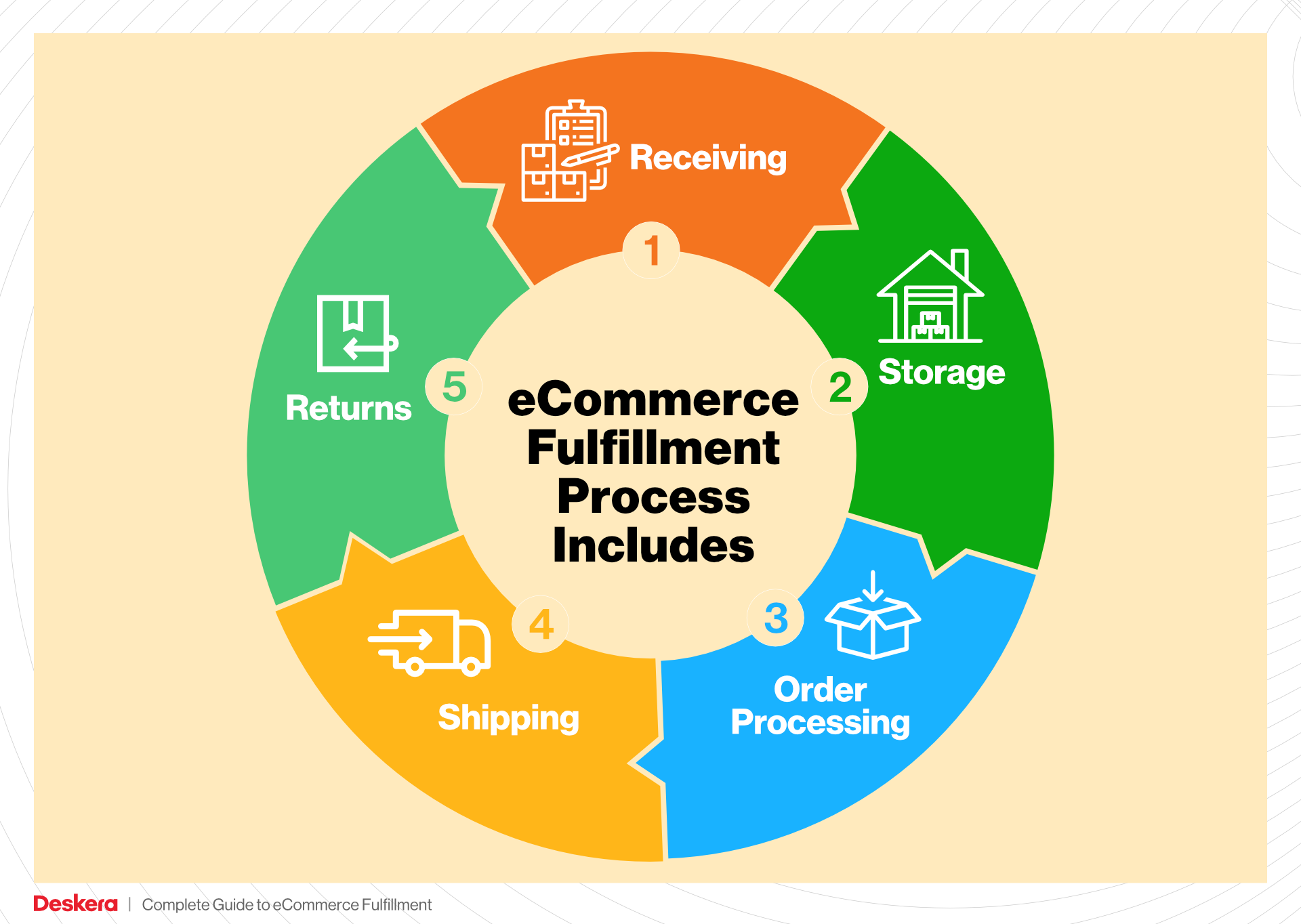
What You’ll Learn In This Guide
- What is E-commerce Fulfillment? An Introduction for Growing Businesses
- The Order Fulfillment Process: From ‘Buy’ Button to Customer’s Door
- Comparing Fulfillment Models: In-House vs. 3PL vs. Dropshipping
- A Deep Dive into Amazon FBA: Pros, Cons, and Who It’s For
- Core Services Offered by Fulfillment Centers
- How to Choose a Fulfillment Partner: A 6-Point Checklist
- Understanding Fulfillment Pricing: A Breakdown of Common Fees
- Frequently Asked Questions (FAQs) about Fulfillment
- Conclusion: Is Outsourcing Fulfillment the Right Move for Your Business?
- Important Disclaimer
The Order Fulfillment Process: From ‘Buy’ Button to Customer’s Door
1. Receiving Inventory
The order fulfillment process begins with receiving inventory, a critical step that sets the stage for the entire operation. When products arrive at your warehouse, they must be inspected for quality and quantity. This is where the Stock Keeping Unit (SKU) system comes into play, allowing you to track individual items effectively.
During this phase, you will check that the items match the purchase order, ensuring that you have received the correct quantities and that there are no damages. This step is crucial as it helps prevent stock discrepancies that could lead to customer dissatisfaction later on. A well-organized receiving process minimizes errors and ensures that your inventory levels are accurate, which is essential for effective order processing and replenishment strategies.
2. Warehouse Storage
Once the inventory is received and verified, it is moved to storage. Effective warehouse storage is vital for optimizing space and ensuring quick access to products when orders are placed. This step involves categorizing and shelving products in a systematic manner, often using a warehouse management system (WMS) to track item locations.
Proper storage not only maximizes efficiency but also minimizes the time spent locating products during the order-picking phase. Implementing best practices such as using FIFO (First In, First Out) or LIFO (Last In, First Out) methods can further enhance your inventory turnover rates. Efficient storage reduces operational costs and enhances your ability to fulfill orders promptly, directly impacting customer satisfaction and retention.
3. Order Picking
Order picking is the process of retrieving items from storage to fulfill customer orders. This step is crucial as it directly affects the accuracy and speed of order fulfillment. Businesses typically utilize pick lists—documents that detail the items needed for each order—to guide warehouse staff during this process.
There are various picking methods, including single order picking, batch picking, and zone picking, each with its own advantages. The choice of method will depend on the size of your operation and the volume of orders processed. Efficient order picking ensures that customers receive the correct products in a timely manner, reducing the likelihood of returns and enhancing overall customer experience.
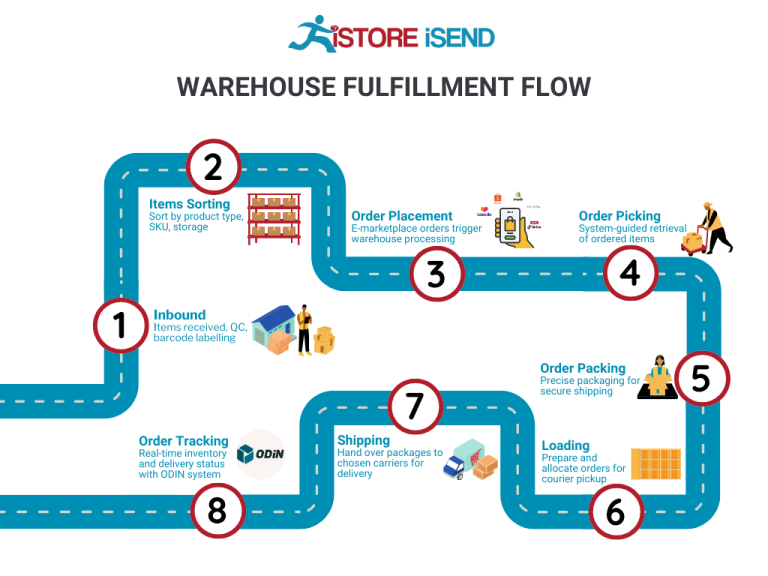
4. Order Packing
After items have been picked, they are taken to the packing station. This step is essential for preparing orders for shipment and involves several key tasks, including creating packing slips, selecting appropriate packaging materials, and ensuring that items are securely packed to prevent damage during transit.
The use of automated packing systems can streamline this process, enhancing efficiency and accuracy. It’s important to consider the principles of effective packing—such as using the right-sized boxes and cushioning materials—to minimize shipping costs and improve customer satisfaction. A well-executed packing process not only protects your products but also reflects your brand’s commitment to quality.
5. Shipping & Delivery
The final step in the order fulfillment process is shipping and delivery. Once orders are packed, they are labeled and prepared for dispatch to customers. This stage involves choosing a shipping carrier and method, which can significantly affect delivery times and costs.
Real-time shipment tracking is a key component here, allowing customers to monitor their orders and enhancing their overall experience. Effective logistics management is essential to ensure that orders are shipped on time and delivered accurately. A well-planned shipping strategy can also provide opportunities for cost savings, such as bulk shipping rates or regional carriers. Ultimately, timely and accurate delivery plays a pivotal role in customer satisfaction and repeat business, making it a critical focus for scaling e-commerce operations.
In summary, mastering these five steps—receiving inventory, warehouse storage, order picking, order packing, and shipping & delivery—will create a robust fulfillment process that can scale with your business, ensuring that you meet customer expectations while optimizing operational efficiencies.
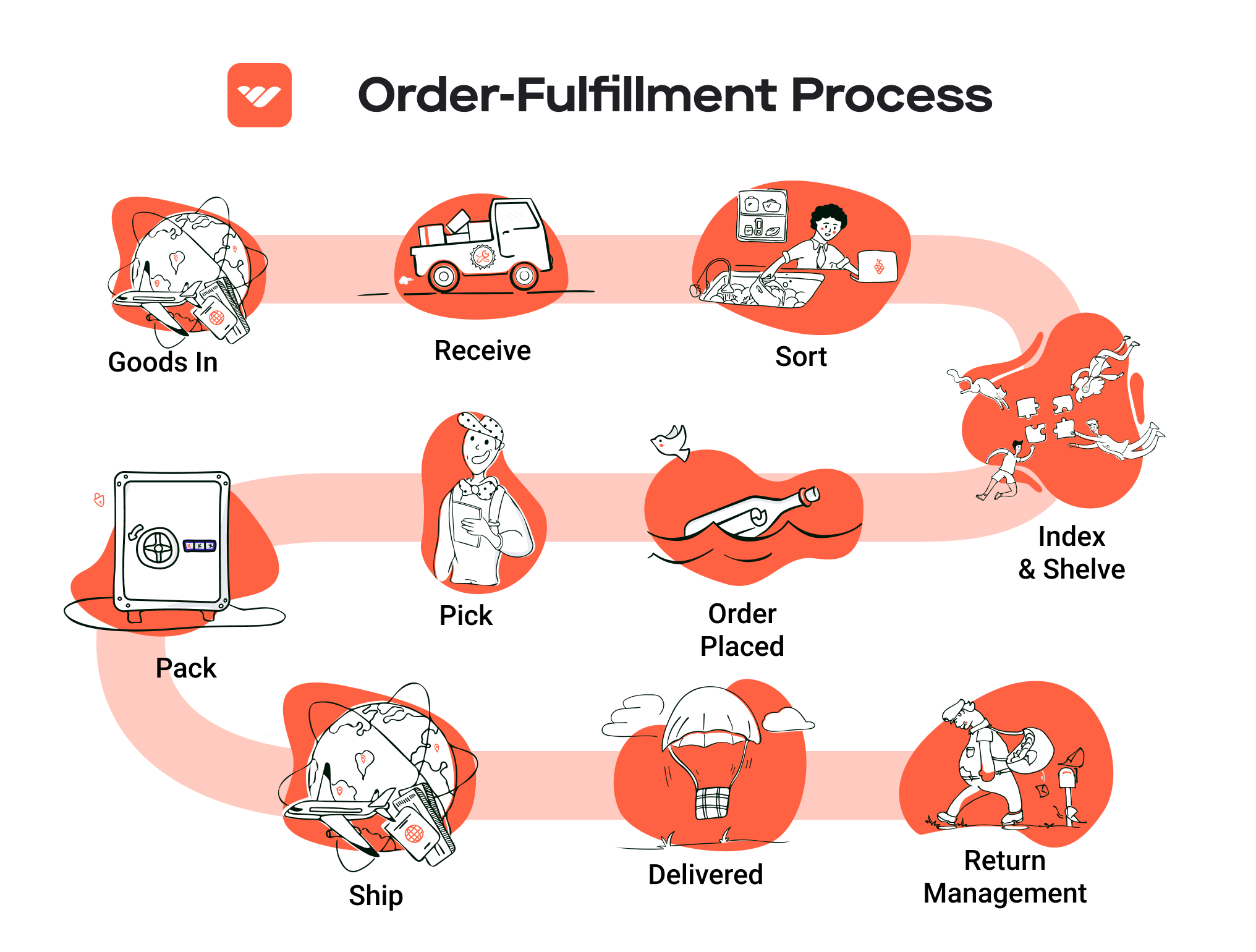
Comparing Fulfillment Models: In-House vs. 3PL vs. Dropshipping
Fulfillment Model Comparison
| Model | Who Handles Inventory | Best For (Business Stage) | Key Advantage | Key Disadvantage |
|---|---|---|---|---|
| In-House Fulfillment | The business itself | Startups and small firms | Full control over processes and quality | Resource-intensive; high overhead costs |
| Third-Party Logistics (3PL) | A specialized logistics provider | Growing businesses | Scalability and efficiency | Less control over processes and inventory |
| Dropshipping | Supplier or manufacturer | New entrepreneurs | Low upfront costs and minimal risk | Limited control over shipping and quality |
In-House Fulfillment
In-house fulfillment involves managing the entire order fulfillment process within your own business. This model is often adopted by startups and small firms that have the resources to maintain a warehouse or storage space and a dedicated team to handle inventory management, order processing, packing, and shipping. One of the primary advantages of in-house fulfillment is the complete control it offers over processes, allowing businesses to set and maintain their own quality standards while gaining real-time insights into inventory levels. This model is particularly beneficial for companies with lower order volumes, as it can be more cost-effective to manage fulfillment internally rather than paying a third-party service. However, the key disadvantage is that it can be resource-intensive. Businesses must invest in warehousing, technology, and human resources, which can lead to high overhead costs, especially in fluctuating real estate markets where warehouse space prices are rising.
Third-Party Logistics (3PL)
Third-party logistics (3PL) providers offer a comprehensive solution for businesses looking to outsource their fulfillment processes. This model is particularly suitable for growing businesses that may not have the infrastructure or resources to manage fulfillment effectively. With 3PL, companies can leverage the expertise and technology of specialized logistics providers to handle warehousing, inventory management, order processing, and shipping. The key advantage of using a 3PL is scalability; as your business grows and order volumes increase, a 3PL can efficiently manage the surge without requiring significant investment from your side. Additionally, these providers often have established relationships with shipping carriers, which can lead to cost savings on shipping rates. However, the trade-off is that businesses relinquish some control over their inventory and fulfillment processes. This can result in challenges related to quality assurance and communication, particularly if the 3PL does not align closely with the company’s values or standards.
Dropshipping
Dropshipping is a fulfillment model that allows businesses to sell products without holding any inventory. Instead, when a customer places an order, the retailer purchases the item from a third-party supplier, who then ships it directly to the customer. This model is particularly appealing to new entrepreneurs as it requires minimal upfront investment, allowing them to enter the market without the financial burden of purchasing inventory. The main advantage of dropshipping is the low risk and overhead, as businesses only pay for products after they have been sold, eliminating the need for warehousing and inventory management. However, dropshipping also comes with significant disadvantages. Retailers have limited control over product quality, shipping times, and packaging, which can lead to inconsistent customer experiences. Moreover, reliance on suppliers can result in stock shortages or delays, negatively impacting customer satisfaction and brand reputation. As such, while dropshipping can be a viable entry point into e-commerce, it may not be sustainable for long-term growth without a robust strategy for supplier management and customer communication.
In conclusion, choosing the right fulfillment model depends on various factors, including business size, resources, and growth aspirations. Each model offers distinct advantages and challenges that need to be carefully weighed to align with your business goals. Understanding these differences is crucial for e-commerce business owners, operations managers, and entrepreneurs aiming to scale their sales and logistics effectively.
A Deep Dive into Amazon FBA: Pros, Cons, and Who It’s For
What is Fulfillment by Amazon (FBA)?
Fulfillment by Amazon (FBA) is a service provided by Amazon that allows sellers to store their products in Amazon’s fulfillment centers. Amazon takes care of storage, packaging, shipping, and customer service on behalf of the sellers. When a customer places an order, Amazon handles the logistics, ensuring that the product is delivered efficiently and promptly. This service is designed to simplify the fulfillment process for sellers, enabling them to focus more on marketing and growing their businesses rather than managing inventory and shipping logistics.
How FBA Works
-
Setup: Sellers create an Amazon seller account and register for the FBA program. They then prepare their products according to Amazon’s guidelines and ship them to Amazon’s fulfillment centers.
-
Storage: Once the products arrive at the fulfillment center, they are stored until sold. Amazon manages the inventory and keeps track of stock levels.
-
Order Processing: When a customer places an order, Amazon’s system automatically processes the order, picking the items from the warehouse, packing them, and preparing them for shipment.
-
Shipping: Amazon takes care of the shipping process, using its extensive logistics network to deliver the product quickly. Items fulfilled through FBA are eligible for Amazon Prime, which can enhance sales potential.
-
Customer Service: Amazon also manages customer inquiries and returns, providing support for any issues that may arise post-purchase.
Pros of Using FBA
1. Prime Eligibility
FBA products are eligible for Amazon Prime, which can significantly increase visibility and sales. Prime members often prefer products that offer fast, free shipping, giving FBA sellers an edge in a competitive marketplace.
2. Customer Trust
By utilizing FBA, sellers benefit from Amazon’s reputation. Customers often trust Amazon’s fulfillment and customer service more than individual sellers, leading to higher conversion rates and customer loyalty.
3. Multi-Channel Fulfillment
FBA allows sellers to fulfill orders from other sales channels (such as their own websites or other marketplaces) using Amazon’s logistics. This means sellers can streamline their operations, using Amazon’s infrastructure for all order fulfillment, which can lead to reduced complexity and increased efficiency.
4. Scalability
FBA enables sellers to scale their operations without the need for significant investments in warehousing and logistics. As sales grow, sellers can rely on Amazon to handle increased order volumes, allowing them to focus on expanding their product lines and marketing efforts.
5. Simplified Returns Management
Amazon handles returns on behalf of sellers, making the process easier for both the seller and the customer. This can lead to improved customer satisfaction and reduced hassle for sellers.
Cons of Using FBA
1. High Fees
FBA can be expensive, with various fees including storage fees, fulfillment fees, and additional costs for long-term storage. These fees can eat into profit margins, especially for low-cost items.
2. Strict Inventory Rules
Sellers must adhere to strict inventory management practices dictated by Amazon, including limits on the quantity of items they can send to fulfillment centers. This can be challenging for businesses with fluctuating demand or seasonal products.
3. Commingling Risks
FBA utilizes a commingling model, meaning that sellers’ products may be mixed with those of other sellers. While this can streamline the fulfillment process, it also poses risks related to product quality and counterfeit concerns. If a customer receives a defective or counterfeit item, it can negatively impact the original seller’s reputation.
4. Loss of Control
By using FBA, sellers relinquish control over many aspects of the fulfillment process, including packaging and shipping. This can lead to challenges in maintaining brand identity, as sellers may not have the opportunity to customize packaging or include promotional materials.
5. Dependency on Amazon
Relying heavily on FBA can create a dependency on Amazon’s platform, leaving sellers vulnerable to changes in Amazon’s policies, fees, or algorithms that can impact visibility and sales.
Who is FBA Best For?
Fulfillment by Amazon is best suited for e-commerce businesses looking to scale quickly without investing heavily in logistics infrastructure. It is particularly advantageous for:
-
Small to Medium-Sized Businesses: Sellers who want to expand their reach without managing their own fulfillment operations can benefit greatly from FBA.
-
Entrepreneurs with Limited Resources: Those who may lack the capital to invest in warehousing and logistics can leverage Amazon’s infrastructure to fulfill orders efficiently.
-
Brands with Established Products: Businesses with proven products that have steady demand can optimize their sales by utilizing FBA’s Prime eligibility and customer trust.
-
Multi-Channel Sellers: Those who sell on multiple platforms can streamline their operations through Amazon’s logistics network, allowing for efficient order fulfillment across various channels.
In conclusion, while FBA offers numerous advantages, including Prime eligibility and customer trust, it also comes with its share of challenges, such as high fees and strict inventory management. Understanding these pros and cons will help sellers determine if FBA aligns with their business goals and operational capabilities.
Core Services Offered by Fulfillment Centers
Inventory Management & Warehousing
Inventory management and warehousing are foundational components of a fulfillment center’s operations. This service encompasses the systematic tracking of stock levels, locations, and movements within the warehouse. A robust inventory management system is crucial for e-commerce businesses, allowing them to maintain optimal stock levels, avoid stockouts, and reduce excess inventory.
The benefits of effective inventory management are manifold. First, it provides real-time visibility into inventory quantities, enabling businesses to make informed decisions about restocking and order fulfillment. This transparency helps mitigate the risk of overstocking, which can tie up valuable cash flow, or understocking, which can lead to missed sales opportunities. Additionally, advanced inventory management systems often integrate with e-commerce platforms, streamlining order processing and enhancing overall operational efficiency. By outsourcing this function to a fulfillment center, businesses can leverage sophisticated technology and expertise that they may not have in-house, ultimately leading to improved customer satisfaction and retention.
Pick and Pack Services
Pick and pack services are at the heart of the fulfillment process. This service involves selecting products from the warehouse (picking) and preparing them for shipment (packing). The process typically begins when an order is received, triggering the fulfillment center to retrieve the ordered items, carefully package them, and label them for shipment.
The primary benefit of pick and pack services is the efficiency and accuracy they bring to order fulfillment. Fulfillment centers are equipped with trained staff and optimized workflows designed to minimize errors and speed up processing times. This means that e-commerce businesses can fulfill a higher volume of orders in less time, which is especially critical during peak shopping seasons or promotional events. Moreover, fulfillment centers often utilize technology such as barcode scanning to ensure that the correct items are picked, further reducing the chances of costly mistakes. By outsourcing this process, businesses can focus on growth and customer engagement rather than the labor-intensive aspects of order fulfillment.
Kitting and Assembly
Kitting and assembly services involve grouping individual items together to create a ready-to-sell product. This can include assembling components into a final product or bundling multiple items into a single package, often referred to as a “kit.” For example, a fulfillment center might assemble a gift set that includes a candle, matches, and a decorative box, or they might prepare a subscription box filled with curated items.
The value of kitting and assembly services lies in their ability to enhance product offerings and improve customer experience. By providing ready-to-ship kits, e-commerce businesses can differentiate themselves from competitors and meet specific customer demands, such as gift sets or themed collections. Additionally, this service can streamline operations by reducing the time customers spend choosing individual items, thus increasing the likelihood of larger order sizes. For businesses looking to offer unique or customized products, kitting services can be particularly beneficial, allowing them to respond quickly to market trends and consumer preferences without the need for extensive in-house resources.
Returns Management (Reverse Logistics)
Returns management, also known as reverse logistics, is an essential service offered by fulfillment centers. This process encompasses all activities related to handling returned products, including processing returns, restocking items, and managing customer refunds. A well-structured returns management system is vital for maintaining customer satisfaction and loyalty.
The benefits of effective returns management are significant. First, a streamlined returns process can enhance the overall customer experience, as customers appreciate a hassle-free return policy. By outsourcing returns management to a fulfillment center, e-commerce businesses can ensure that returns are handled quickly and efficiently, minimizing disruptions to their inventory flow. Moreover, fulfillment centers often have established procedures for assessing returned items and determining their eligibility for restocking or refurbishment, which can help recover value from returned products. This can lead to improved inventory accuracy and a better understanding of product performance, allowing businesses to make data-driven decisions about inventory purchasing and marketing strategies.
In summary, the core services provided by fulfillment centers—inventory management and warehousing, pick and pack services, kitting and assembly, and returns management—are critical for e-commerce businesses looking to scale their operations effectively. By leveraging these services, businesses can improve operational efficiency, enhance customer satisfaction, and ultimately drive growth in a competitive marketplace.
How to Choose a Fulfillment Partner: A 6-Point Checklist
Location & Warehouse Network
Importance: The geographical location of your fulfillment partner’s warehouses can significantly impact shipping times, costs, and customer satisfaction. A well-distributed network allows for faster delivery to a broader customer base.
Questions to Ask:
– Where are your warehouses located, and how does this impact shipping times to my primary customer regions?
– Do you have multiple fulfillment centers to ensure quicker delivery across different areas?
– How do you manage shipping costs based on warehouse location?
Technology & Integrations
Importance: A fulfillment partner with robust technology can streamline operations, reduce errors, and provide real-time visibility into inventory and order status. Seamless integration with your existing e-commerce platforms is crucial for efficiency.
Questions to Ask:
– What technology do you use for order management, inventory tracking, and reporting?
– Can your system integrate with my e-commerce platform (e.g., Shopify, WooCommerce) and other tools I currently use?
– How do you handle updates and maintenance of your technology systems?
Specializations (e.g., Cold Storage, Oversized Items)
Importance: Different products have unique storage and handling requirements. A fulfillment partner that specializes in your product type can ensure proper handling and compliance with safety regulations.
Questions to Ask:
– What types of products do you specialize in, and do you have the infrastructure for my specific needs (e.g., cold storage for perishables, handling oversized items)?
– Can you provide examples of how you’ve successfully managed products similar to mine?
– Are there any limitations regarding the size, weight, or fragility of the items you can handle?
Scalability & Capacity
Importance: As your business grows, your fulfillment needs will evolve. A partner that can scale with you ensures you won’t face bottlenecks or need to switch providers during peak times.
Questions to Ask:
– How do you handle fluctuations in order volume, especially during peak seasons or promotional events?
– What is your current capacity, and how quickly can you scale up operations if my order volume increases?
– Do you have contingency plans in place for unexpected surges in demand?
Pricing and Contracts
Importance: Understanding the cost structure is vital to ensure your fulfillment expenses align with your budget and profit margins. Clear contracts help avoid hidden fees and misunderstandings.
Questions to Ask:
– Can you provide a detailed breakdown of your pricing structure, including setup fees, storage fees, picking and packing fees, and shipping costs?
– Are there any minimum order requirements or penalties for not meeting those thresholds?
– What is the length of the contract, and what are the terms for renewal or termination?
Customer Support & Reviews
Importance: Reliable customer support can make a significant difference in your fulfillment experience. Positive reviews and testimonials can give you insight into a partner’s reliability and service quality.
Questions to Ask:
– What kind of customer support do you offer (e.g., dedicated account manager, 24/7 support)?
– How do you handle issues or disputes related to order fulfillment?
– Can you provide references or case studies from other clients in my industry?
Conclusion
Choosing the right fulfillment partner is a critical decision that can impact your business’s efficiency, customer satisfaction, and overall growth potential. By carefully considering the six key areas outlined in this checklist, you can make an informed choice that aligns with your operational needs and long-term goals. Take the time to conduct thorough research and ask the right questions to ensure your fulfillment partner is equipped to support your business as it scales.
Understanding Fulfillment Pricing: A Breakdown of Common Fees
Initial Setup Fees
Initial setup fees are one-time charges incurred when you first engage a fulfillment service. These fees cover the costs associated with integrating your technology with the provider’s systems, syncing inventory, and preparing their facilities to handle your products. Typically, these fees can range from a few hundred to several thousand dollars, depending on the complexity of your operations and the provider’s capabilities.
To calculate initial setup fees, providers often consider the following factors:
– Integration Complexity: More complex systems that require custom solutions will incur higher fees.
– Inventory Syncing: The number of SKUs and the extent of inventory that needs to be integrated will influence the cost.
– Training Requirements: If your team requires training on how to use the fulfillment provider’s technology, this may add to the setup costs.
Receiving Fees
Receiving fees are charged when the fulfillment center accepts and organizes your inventory. These fees cover the labor and resources necessary to inspect, sort, and store your products upon arrival. The charges can vary based on the volume of inventory and the complexity of handling the goods.
Calculating receiving fees typically involves:
– Volume of Inventory: Many providers charge per pallet or per unit received.
– Inspection Requirements: If your products require thorough inspection or quality checks, additional fees may apply.
– Special Handling: Items that need special care or handling may incur higher receiving fees due to the additional labor involved.
Storage Fees (per pallet/bin)
Storage fees are ongoing costs that you will incur for the space your inventory occupies within the fulfillment center. These fees are generally calculated on a per-pallet or per-bin basis, with costs varying based on the provider’s location and the specific storage conditions required for your products (e.g., climate control).
When determining storage fees, consider:
– Pallet/Bin Size: Standard dimensions are often used, but larger items may be charged at a higher rate.
– Storage Duration: Some providers offer tiered pricing based on how long your inventory is stored, incentivizing quicker turnover.
– Inventory Turnover Rate: Low turnover rates may lead to additional charges, as providers may charge for inventory that remains in storage longer than a specified period.
Pick & Pack Fees (per item/order)
Pick and pack fees are charged for the labor involved in selecting items from the warehouse, packing them appropriately, and preparing them for shipment. This is often one of the most variable components of fulfillment pricing, as it depends on the number of items in each order and the complexity of the packing process.
To calculate pick and pack fees, consider the following:
– Number of Items: Fees are typically charged per item, so larger orders will incur higher fees.
– Packaging Requirements: Specialized packing materials or methods (e.g., fragile items requiring extra cushioning) can increase costs.
– Order Complexity: If orders require additional steps, such as kitting or assembling, this can further raise the fees.
Shipping Fees
Shipping fees are the costs associated with transporting your products from the fulfillment center to the customer. These fees can vary widely based on factors such as package weight, dimensions, shipping speed, and the destination.
When calculating shipping fees, take into account:
– Carrier Rates: Different carriers (e.g., FedEx, UPS, USPS) have varying rates, so it may be beneficial to compare options.
– Shipping Zones: Costs can increase significantly based on the distance from the fulfillment center to the customer.
– Order Size and Weight: Heavier or bulkier items will incur higher shipping fees, as carriers typically charge based on these factors.
Tips for Getting an Accurate Quote
-
Be Transparent About Your Needs: Provide potential fulfillment partners with detailed information about your product types, order volumes, and shipping requirements. This will help them provide a more accurate estimate.
-
Request Itemized Quotes: Ask for a breakdown of all fees associated with their services, including any potential hidden costs. This will allow you to make a more informed comparison between providers.
-
Consider Volume Discounts: If you anticipate significant order volume, inquire about bulk pricing or discounts for high-volume shipping and storage.
-
Evaluate Long-term Costs: Look beyond initial setup fees and focus on the total cost of ownership over time, including storage and pick & pack fees, to understand the long-term financial impact.
-
Assess Additional Services: Some fulfillment centers offer value-added services, such as returns management or custom packaging. Determine if these services are included in the quoted fees or if they will incur additional costs.
By understanding these common fulfillment pricing models and seeking detailed quotes, you can make informed decisions that align with your business’s operational needs and budget constraints.
Frequently Asked Questions (FAQs) about Fulfillment
1. What is fulfillment in e-commerce?
Fulfillment in e-commerce refers to the process of receiving, processing, and delivering customer orders. It encompasses all activities from order receipt to shipping and includes inventory management, packing, and handling returns. Efficient fulfillment is crucial for maintaining customer satisfaction and operational effectiveness.
2. What’s the difference between a warehouse and a fulfillment center?
A warehouse is primarily a storage facility for inventory, focusing on the long-term storage of goods. In contrast, a fulfillment center specializes in the entire order processing cycle, including receiving products, picking and packing orders, and shipping them directly to customers. Fulfillment centers are designed to handle high volumes of orders quickly and efficiently.
3. What is a 3PL (third-party logistics provider)?
A 3PL is a service provider that manages a company’s logistics operations, including warehousing, inventory management, order fulfillment, and shipping. By outsourcing these functions to a 3PL, businesses can focus on their core competencies while benefiting from the provider’s expertise, technology, and economies of scale.
4. How much do fulfillment services cost?
Fulfillment service costs vary depending on several factors, including the provider’s fees, the volume of orders, storage space, and additional services. Common cost components include setup fees, storage fees (charged per pallet or cubic foot), picking and packing fees, and shipping fees. It’s essential for businesses to analyze these costs to determine their impact on profit margins.
5. What are the types of fulfillment models available?
The main fulfillment models include:
– In-house fulfillment: Businesses manage their own storage, packing, and shipping processes.
– Third-party fulfillment: Outsourcing fulfillment to a 3PL provider that handles all logistics.
– Dropshipping: Partnering with suppliers who ship products directly to customers, eliminating the need for inventory management.
6. How can I choose the right fulfillment partner?
Selecting the right fulfillment partner involves assessing their scalability, technology integration, cost structure, and capabilities. Consider whether they can handle your current order volume and future growth, how well their technology integrates with your systems, and if their services align with your product types and shipping requirements.
7. What technology is essential for efficient fulfillment operations?
Key technologies for fulfillment include inventory management systems, warehouse management systems, order processing software, and logistics tracking tools. These technologies streamline processes, reduce errors, and provide real-time visibility into inventory levels and order statuses.
8. How can I optimize my fulfillment process?
To optimize your fulfillment process, focus on inventory accuracy, streamline order picking and packing, utilize technology for real-time tracking, and implement efficient return management procedures. Regularly review your fulfillment metrics and gather customer feedback to identify areas for improvement.
9. What are common challenges in fulfillment, and how can they be addressed?
Common challenges include managing inventory levels, ensuring timely shipping, handling returns, and maintaining quality control. To address these issues, businesses should invest in robust inventory management systems, establish clear shipping protocols, and develop a comprehensive returns policy that enhances customer satisfaction.
10. How does fulfillment impact customer satisfaction?
Efficient fulfillment directly influences customer satisfaction by ensuring timely delivery, accurate order processing, and effective handling of returns. Customers expect fast, reliable service, and any delays or errors in fulfillment can lead to dissatisfaction and lost business. Prioritizing fulfillment excellence can enhance customer loyalty and drive repeat purchases.
Conclusion: Is Outsourcing Fulfillment the Right Move for Your Business?
The Case for Outsourcing Fulfillment
Outsourcing fulfillment can be a transformative decision for your e-commerce business, enabling you to streamline operations and focus on core growth activities. By leveraging a third-party logistics (3PL) provider, you can save significant time, allowing you to redirect resources toward marketing, product development, and customer engagement. This shift can be especially beneficial during peak seasons or periods of rapid growth, where managing logistics in-house may become overwhelming.
Scalability is another compelling advantage of outsourcing fulfillment. A specialized partner can quickly adapt to fluctuations in demand, whether it’s a sudden spike due to a successful marketing campaign or seasonal sales. This flexibility ensures that you can meet customer expectations without the burden of investing in additional warehouse space or workforce management.
Moreover, 3PL providers bring a wealth of expertise to the table. They are equipped with advanced technology and industry knowledge that can enhance your fulfillment process, minimize errors, and improve delivery times. This not only elevates customer satisfaction but also fosters brand loyalty, crucial elements in today’s competitive e-commerce landscape.
However, the success of outsourcing fulfillment hinges on selecting the right partner. It’s imperative to evaluate potential fulfillment services based on their capabilities, technology integration, and overall alignment with your business goals. A well-chosen partner can be a strategic asset in your growth journey.
As you consider the possibility of outsourcing fulfillment, take a moment to audit your current shipping process. Assess your operational pain points, customer feedback, and growth aspirations. This analysis can help you determine whether a fulfillment partner is the right next step toward achieving your business objectives. Remember, the right decision today can pave the way for sustainable growth tomorrow.
Important Disclaimer
⚠️ Important Disclaimer
The information in this guide is for educational purposes. Fulfillment services, pricing, and platform features change frequently. Always conduct your own due diligence and consult with providers directly before making business decisions.
